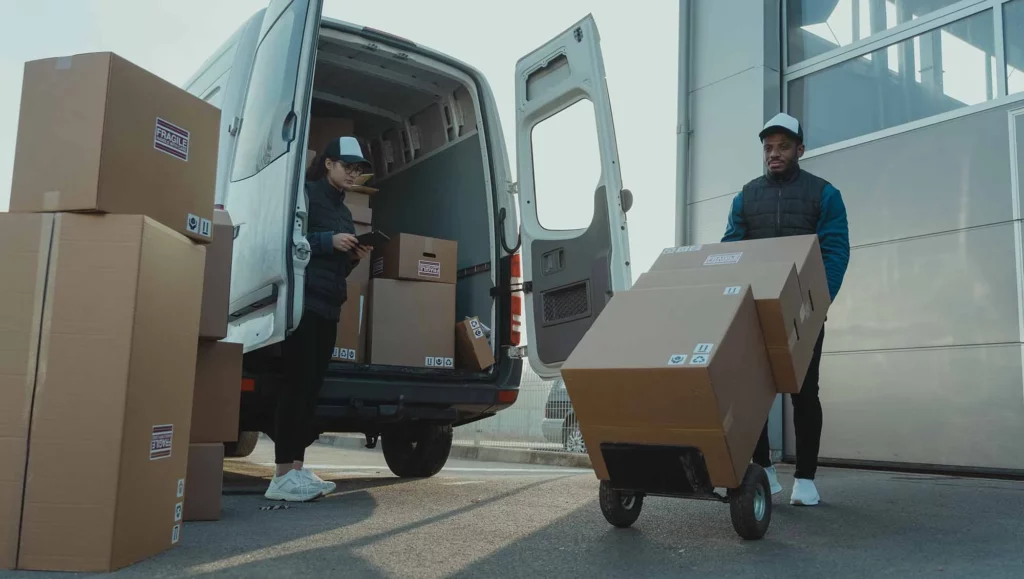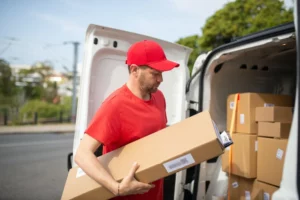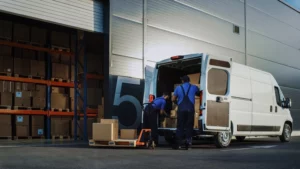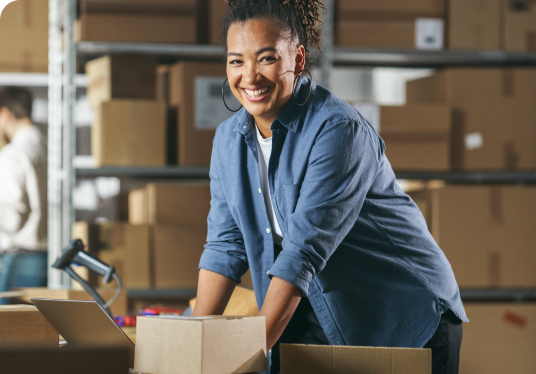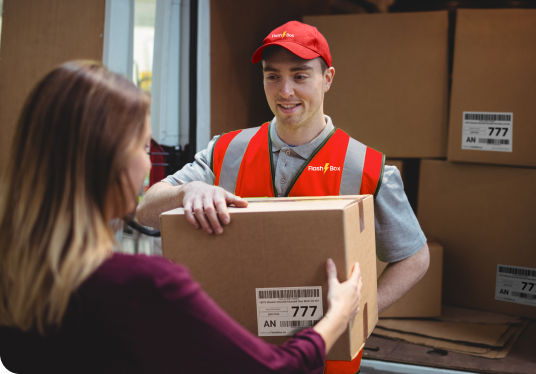Last-mile delivery is the final leg of the delivery process, involving transporting goods from a distribution center or hub to businesses, stores, and consumers in the destination region.
Last-mile delivery is often the most challenging and expensive part of the supply chain despite its short distance.
In this blog post, we’ll explore the challenges of last-mile delivery, the solutions and technologies available to improve it, and the emerging trends that businesses should be aware of.
Challenges:
The challenges of last-mile delivery include:
Cost: According to a study by APQC, last-mile delivery can account for up to 41% of the total delivery cost.
Visibility: With real-time tracking and monitoring systems, businesses may be able to manage their supply chain effectively and customers may experience delays or issues with their deliveries.
Vehicle capacity: Ensuring delivery vehicles are appropriately sized and equipped for the types of packages transported can help improve delivery efficiency and reduce costs.
Sustainability: Last-mile delivery is responsible for up to 25% of total emissions from the transportation sector, making it a critical area for businesses to adopt more sustainable delivery practices.
Visibility:
Visibility is one of the most critical considerations for last-mile delivery. According to the APQC survey, obtaining electronic proof of delivery for customer deliveries is a fairly common practice that may include customer electronic signoff, delivery snapshots, and more.
On average, 79% of respondents engage in this practice, and at the 75th percentile, 90% obtain electronic proof of delivery.
The difference is significant when looking at the 25th versus 75th percentile, as 20% more of the top-performing companies are obtaining electronic proof of delivery on the last mile delivery.
Providing customers real-time tracking and delivery updates can also improve visibility and customer satisfaction.
Vehicle Capacity:
Vehicle capacity is another crucial consideration for last-mile delivery efficiency. Ensuring delivery vehicles are appropriately sized and equipped for the types of packages transported can help improve delivery efficiency and reduce costs.
Respondents reported that the average vehicle capacity used when the vehicle departs their location is 84%. The top quartile of respondents’ trucks averages 90% complete, compared to only 77% for organizations at the 25th percentile.
This delta of 13% has a two-fold effect: a truck packed more fully is more profitable and leads to reductions in carbon emissions because fewer trucks are on the road.
Solutions and Technologies:
To address the challenges of last mile delivery, businesses can leverage the following solutions and technologies:
Real-time tracking and monitoring systems: These systems can help businesses improve visibility into their supply chain and provide customers with real-time updates on the status of their deliveries.
Route optimization software: This software can help delivery drivers plan the most efficient routes to their destinations, reducing the time and fuel required for each delivery.
Mobile devices and communication tools: can help drivers stay in touch with dispatchers and customers, improving communication and visibility throughout delivery.
Crowdsourced delivery models: These models can help businesses reduce delivery times and costs while improving customer satisfaction.
Electric vehicles and cargo bikes: These alternatives can help businesses reduce their carbon footprint and improve their sustainability performance.
Emerging Trends:
Finally, here are some emerging trends that businesses should be aware of when it comes to last-mile delivery:
Same-day and on-demand delivery: As consumers demand faster and more convenient delivery options, businesses are pressured to provide same-day and on-demand delivery services.
Autonomous delivery vehicles: vehicles can increase efficiency, reduce costs, improve safety, and enable 24/7 delivery services, though there are still challenges to be addressed.
Conclusion:
Last-mile delivery is a complex and challenging aspect of logistics. Still, with the right solutions and technologies, businesses can improve their operations and better meet the needs of their customers.
Companies can optimize their last-mile delivery operations and reduce environmental impact by leveraging real-time tracking and monitoring systems, route optimization software, mobile devices, communication tools, and sustainable delivery practices.
Flashbox offers same-day and next-day delivery services and provides businesses with the best solutions to enhance their last-mile delivery operations.
Additionally, businesses should stay up-to-date on emerging trends, such as autonomous delivery vehicles, augmented reality, and drones, to ensure they remain competitive in the rapidly evolving last-mile delivery landscape.
